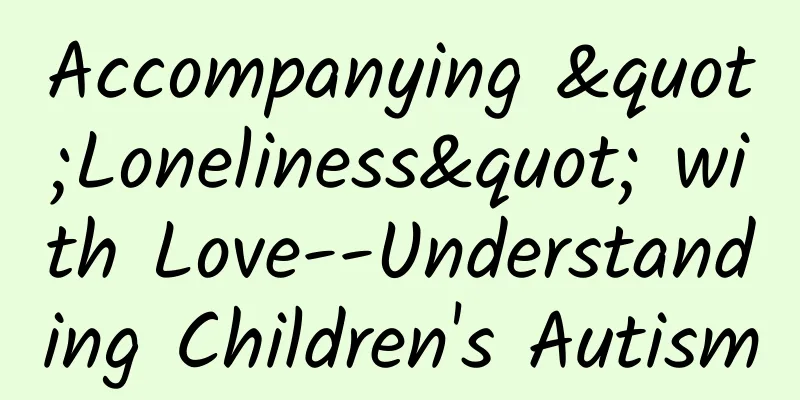"Mycoplasma infection" causes frequent infection among children in many places! What medicine is effective?

|
In recent days, the number of children with Mycoplasma pneumoniae infection in pediatric clinics in many places across the country has increased dramatically, and the treatment drug "azithromycin" has also become a hot search term on the Internet and a "hot item" among parents. What is Mycoplasma pneumoniae infection? How old are children likely to be "infected"? Why is cephalosporin ineffective? What should I do if azithromycin is not effective? The “culprit of infection” is neither bacteria nor virus Mycoplasma is a microorganism, which is between bacteria and viruses in size, only 0.2~0.3 microns. Mycoplasma pneumonia is an acute lung infection caused by Mycoplasma pneumoniae infection, and is the most common community-acquired pneumonia in children aged 5 years and above in my country. But this year is different from previous years. According to survey statistics, it is not uncommon for children under 3 years old to get sick. Mycoplasma has no cell wall, which is the main reason why the treatment effect of drugs such as cephalosporins, penicillin antibiotics (which target the cell wall) or oseltamivir (antiviral drug) is poor. High fever and severe dry cough are signs of infection After children are infected with Mycoplasma pneumoniae, fever and cough are the main clinical manifestations, which may be accompanied by headache, sore throat, earache and runny nose. The fever is mainly moderate to high fever (body temperature can reach 39°C and persists), and persistent high fever indicates a more serious condition. The cough is more severe and can be similar to whooping cough (paroxysmal, spasmodic cough). Some children have wheezing, which is more common in infants and young children. After the fever subsides, the cough may continue for 1 to 2 weeks. Azithromycin is the drug of choice For Mycoplasma pneumoniae infection, macrolide antibiotics are generally the first choice for treatment, including azithromycin, clarithromycin, erythromycin, roxithromycin and acetyl kitasamycin. Azithromycin has become the first choice for treatment due to its good clinical efficacy and little gastrointestinal irritation. The following 3 points should be noted during the use of the drug: 1. See the instructions for the time of taking the medicine It is generally recommended to take it 1 hour before or 2 hours after meals. 2. Dosage according to body weight Azithromycin can be given at a dose of 10 mg/(kg body weight·day) once a day, orally or intravenously, for a course of 3 days, which can be extended to 5 days if necessary. It can also be given at a dose of 10 mg/(kg body weight·day) once on the first day, followed by 5 mg/(kg body weight·day) for 4 consecutive days. For severe cases, intravenous azithromycin is recommended, 10 mg/(kg body weight·day), once a day, for about 7 consecutive days. The second course of treatment can be started 3 to 4 days after stopping the drug. The total course of treatment depends on the condition. 3. Don’t worry if you stop taking the medicine When taking azithromycin orally, the doctor's instructions often state "take three days and stop four days", that is, take it for three consecutive days and stop for four days. Many parents worry that the efficacy of the drug will decrease after stopping the drug, which will lead to worsening of the condition. In fact, this is not the case, because azithromycin has a long half-life, even if the drug is stopped, it can maintain an effective antibacterial concentration in the body, and it can also reduce drug accumulation and reduce the occurrence of adverse reactions. Alternative drug treatments should be used with caution When azithromycin is not effective, it should be considered that Mycoplasma pneumoniae is resistant to azithromycin. At this time, azithromycin can be discontinued and alternative drugs can be selected for treatment. There are two main types of alternative drugs, both of which have age restrictions. 1. New tetracycline antibiotics Such as doxycycline and minocycline. These drugs may cause yellowing of teeth and poor enamel development and are only suitable for children over 8 years old. 2. Quinolone antibiotics Such as levofloxacin and moxifloxacin. Due to their adverse effects on muscles and bones, these drugs should not be used by children and adolescents under 18 years old. Although Mycoplasma pneumoniae infection is not an infectious disease, it is still contagious and is mainly transmitted through droplets. Therefore, in daily protection, we should pay attention to reducing gatherings, maintaining good hygiene habits such as washing hands frequently and wearing masks. Once a child has a fever accompanied by a severe cough, he should seek medical attention in time, identify the cause, and receive standardized treatment. Do not blindly take medicine on your own. |
<<: How to supplement iron correctly for pregnant mothers
Recommend
Hepatitis C is curable and treatment is reimbursable, but the biggest difficulty is finding patients and providing timely treatment
Hepatitis C treatment in China has entered a new ...
What to do if your breasts swell and hurt during delayed menstruation
Early or delayed menstruation is worrying. Some c...
My period has not come for 4 days
Delayed menstruation has almost become a common p...
Can postpartum women eat sea cucumbers?
Song Xiaobao's "Sea Cucumber Fried Noodl...
How to increase female estrogen
Most women are very troubled by menstruation. If ...
If the fruit is moldy and rotten, can I still eat it after cutting off the rotten part?
Can we still eat rotten fruit? Some people think ...
How to relieve back pain during menstruation
Low back pain is a common clinical symptom and ma...
Is it serious if the five eugenics tests are positive?
In order to ensure the health of the baby, many c...
What is the cause of the early gestational sac?
In the early stages of pregnancy, women's ges...
The nails are the "barometer" of health, check yourself now!
Do you usually pay attention to your nails? Every...
Is it accurate to determine the gender of a baby at 4 months?
With the improvement of people's ideological ...
How to take care of the waist pain of pregnant women
Having a baby can be said to be a big event in ou...
What is the correct massage method for breast enhancement?
A full chest has always been a woman’s greatest a...
What are the dangers of irregular menstruation in women?
The health of the endocrine system is very import...
What causes bad breath before period?
Women are more worried about the menstrual period...









